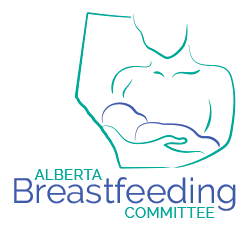
What is the Baby-Friendly Initiative? (BFI)
What are the BFI (Baby-Friendly Initiative)
10 Steps
Ten Steps to Successful Breastfeeding (revised 2018)
Critical Management Procedures:
1. a. Comply fully with the International Code of Marketing of Breast-milk Substitutes and relevant World Health Assembly resolutions.
b. Have a written infant feeding policy that is routinely communicated to staff and parents.
c. Establish ongoing monitoring and data-management systems.
2. Ensure that staff have sufficient knowledge, competence and skills to support breastfeeding.
Key Clinical Practices:
3. Discuss the importance and management of breastfeeding with pregnant women and their families.
4. Facilitate immediate and uninterrupted skin-to-skin contact and support mothers to initiate breastfeeding as soon as possible after birth.
5. Support mothers to initiate and maintain breastfeeding and manage common difficulties.
6. Do not provide breastfed newborns any food or fluids other than breast milk, unless medically indicated.
7. Enable mothers and their infants to remain together and to practise rooming-in 24 hours a day.
8. Support mothers to recognize and respond to their infants’ cues for feeding.
9. Counsel mothers on the use and risks of feeding bottles, teats and pacifiers.
10. Coordinate discharge so that parents and their infants have timely access to ongoing support and care.
Interventions to improve breastfeeding practices are cost-effective and rank among those with the highest cost-benefit ratio. The cost per child is low compared to that for curative interventions. – World Health Organization
The Baby-Friendly Initiative (BFI) is an integrated approach for hospitals and community health services, based on the Baby-Friendly Hospital Initiative and provides ten evidence-based steps to optimally support maternal-child health for all mothers and babies.
The Baby-Friendly Hospital Initiative (BFHI) was initiated by the World Health Organization (WHO) and the United Nations International Children’s Emergency Fund (UNICEF) in 1991. The BFHI has a “simultaneous focus on the role of health services in protecting, promoting and supporting breastfeeding and on the use of breastfeeding as a means of strengthening the contribution of health services to safe motherhood, child survival and primary health care in general” (45th World Health Assembly (WHA) 1992).
The BFHI is embodied in the Ten Steps to Successful Breastfeeding, also called the Global Criteria, and describes the minimum standard of care for newborn infants (including information supporting infants in the special care nursery as appropriate). The BFHI was revised, updated and expanded by WHO/UNICEF in 2009, based on current research and experience in many countries.
BFI is a continuous quality improvement strategy with identifiable indicators and measurable outcomes.
The Innocenti Declaration 2005 called on all governments to “revitalize the BFHI, maintaining the Global Criteria as the minimum requirement for all facilities, expanding the Initiative’s application to include maternity, neonatal and child health services and community-based support for lactating women and caregivers of young children.”
In Canada, the BFHI is called the Baby-Friendly Initiative (BFI), reflecting the continuum of care. The Breastfeeding Committee for Canada (BCC) BFI Integrated 10 steps Practice Outcome Indicators for Hospitals and Community Health Services describe the international standards for the WHO/UNICEF Global Criteria within the Canadian context. Experience with the implementation and assessment of the BFI in Canada led to the development of the BCC 10 Steps and 7 Point Plan Practice Outcome Indicators in 2004. The revised BCC Integrated 10 Steps Practice Outcome Indicators provides a single set of criteria for both hospitals and community health services. (2012)
See WHO UNICEF BFHI Implementation 2018 for the full document.

